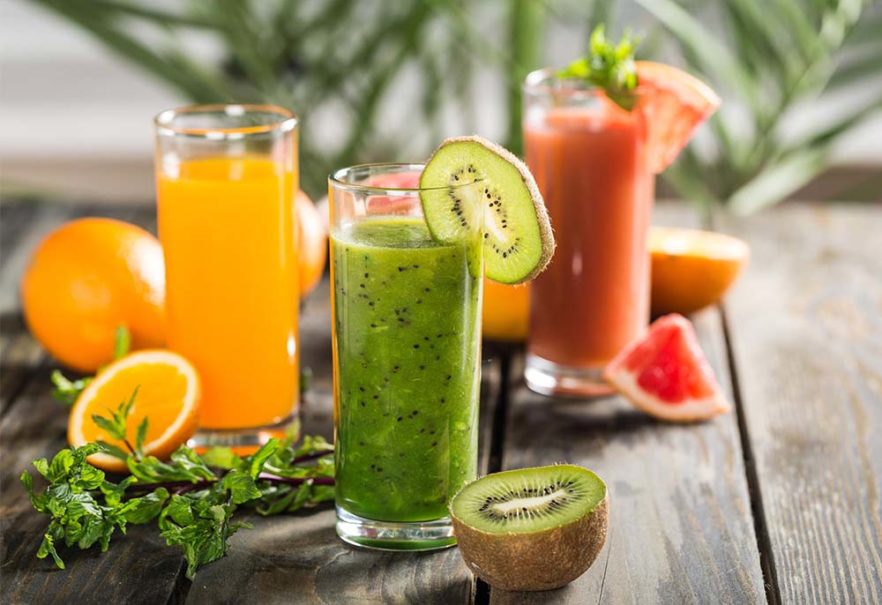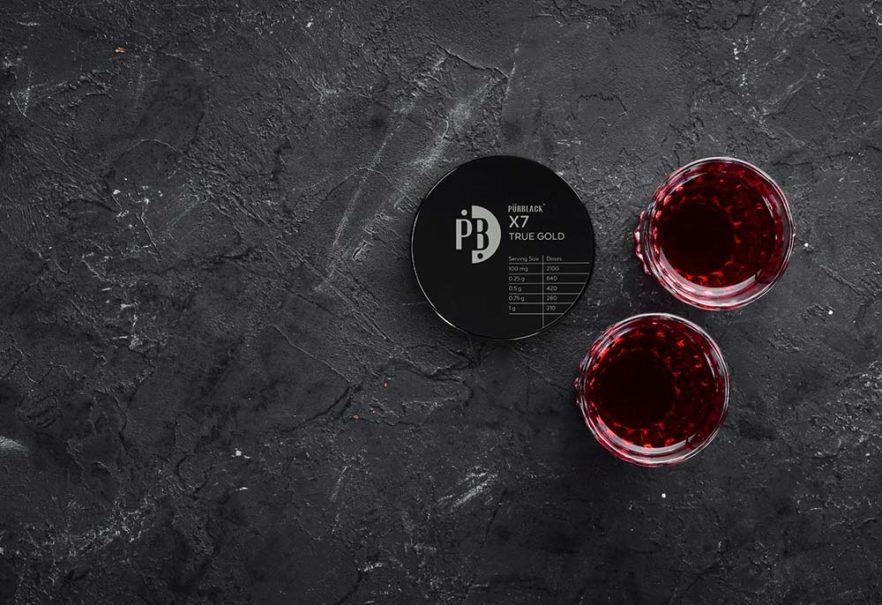Nobody likes diabetes. For one, you have to always be careful that what you’re eating doesn’t have too much sugar. No second serving of ice cream for you. Besides that, you have to deal with weekly checkups and blood sugar tests. So, it’s understandable why a lot of people decide to live on a diet of juice — and maybe supplement with shilajit. But, can a diabetic patient take shilajit when juicing to keep blood sugar down? Does it work to help keep blood sugar low among healthy individuals as well. *First of all, shilajit helps healthy people maintain normal blood sugar levels. Great if you do it for the purpose of prevention. But if you do have diabetes, consult your doctor to see if it’s okay to do it in your particular case.
You may think it’s better to trade eating proper meals with juicing to try to avoid diabetes. But there’s a problem with that. Juice isn’t all that healthy stuff they try to sell you online or on TV. Instead, it’s actually quite the opposite. So, by trying to avoid getting diabetes by changing into a juice diet, you might actually be juicing your way to diabetes.
Today we give you the lowdown on the good, the bad, and the ugly of juicing. We’ll tell you how it can put you at risk for spiking your blood sugar levels. And we’ll let you in on an ancient wonder resin called shilajit. Plus, the science behind how shilajit used in artificially induced diabetes in animals and among healthy individuals can keep sugar low.*
What is Diabetes?
Diabetes is a chronic disease that happens when the pancreas isn’t able to produce enough insulin to break down glucose into a form that will be useful to your cells. Missing this transformation causes glucose to build up in the bloodstream. When there’s too much glucose left in the blood, blood pressure spikes. Over time, blood vessels become brittle and burst. If the condition persists, it is termed diabetes.
Types of Diabetes
There are 3 types of diabetes:
- Type 1 diabetes. This is where your pancreas is no longer capable of producing insulin anymore. In the absence of insulin, your blood glucose levels are left circulating in your bloodstream. Normally, blood glucose will have been broken down. Then, converted into a form of energy that is useful for your body before being distributed to cells, instead of being left in the bloodstream.
- Type 2 diabetes. This refers to the type of diabetes that affects 90% to 95% of Americans [1]. The pancreas still produces insulin, but the cells of the body do not respond normally to insulin.
- Gestational diabetes. This type of diabetes affects pregnant women.
Complications from Diabetes
Considered as a chronic disease, diabetes can lead to other, more serious health problems such as follows:
- Cardiovascular disease
- Blurred vision and blindness
- Liver and kidney disease
- Skin conditions and diseases
- Blood circulation problems on the legs and feet can lead to amputation
Once you have diabetes, you have it for life. It may benefit you to know how to use shilajit for diabetes if you are a healthy individual who is trying to maintain healthy blood sugar levels. That’s why it’s important to keep your blood sugar levels low, most especially if you are considered borderline diabetic. Mineral pitch, as it is commonly known, may help promote health by maintaining normal blood sugar levels. Just keep in mind that results may vary from one person to another.*
Is Juicing Good or Bad for Your Health?
For starters, juicing provides the body with more nutrients as compared to when eating a normal American diet [2]. Switching to a juice diet will give you all the nutrients, antioxidants, and vitamins that you get from fresh fruit and vegetables. By living on a juice diet, you actually increase your Vitamin C, Vitamin E, folate, and selenium levels. [3]
Juicing and Your Body
Juicing has its advantages. But, juicing restricts your consumption of protein, carbs, or fat that you would normally get from a complete meal. Protein is necessary for maintaining muscle mass. Even regular consumption of good fats is important because fats provide the body with vitamins A, E, D, and K.
Here are other disadvantages of juicing:
- Fruits naturally contain high levels of sugars called fructose and sucrose. In fact, studies show that juicing fruits is linked to high blood sugar, obesity, and type 2 diabetes. [4]
- Juicing has been proven to increase the chances of developing obesity. Research shows that 18.4% of all children who drink fruit or vegetable juice are obese. [5] Obesity is a risk factor for diabetes. Experts recommend cutting down juice intake to significantly lower a person’s risk for diabetes. [6]
- Studies show that consuming juices of fruits that are high in oxalate can lead to acute renal failure.[7]
- Drinking juice made from non-organic vegetables may cause you to ingest pesticides and insecticides too. [8]
Why are you juicing?
Since we’re in the middle of reassessing your decision to go on a juicing diet, it might be a good time for you to answer this question.
Here are some possible motivations and our take on each one:
- Lose Weight. We already showed you evidence that juicing is more likely to lead to obesity.
- Up your intake of nutritious foods. Juicing helps you derive some of the essential vitamins and minerals your body needs. But, it also deprives you of others.
- Improve immunity. Juicing lets you obtain more antioxidants. But, juicing is bound to damage your immune response soon enough. That is, by causing blood sugar levels to spike. As a result, it will damage your blood vessels, kidney, liver, heart, and other vital organs as well.
- Detox. The body has its own way of detoxifying itself. Support these processes by eating vegetables high in fiber and regular exercise.
Adding shilajit taken at the proper dosage can help you obtain the nutrients your body requires to function optimally. Shilajit may increase your intake of nutrients such as protein, calcium, phosphorus, iron, riboflavin, and ascorbic acid. [9] The beneficial effect of shilajit in diabetes in regards to healthy people, may also bring better results than simply relying on juicing alone*. This is based on the positive effect of shilajit in several rat trials. More of these studies are discussed below.
Shilajit for Diabetes Patients
Shilajit is a resinous substance that is produced by a complex process involving humification. This is where medicinal herbs and plants undergo various stages of decomposition. The process is completed by subjecting the resin and its precursors to certain environmental conditions. Then later, mixing with soil.
Factors such as temperature, humidity, pressure, and altitude all help make shilajit what it is. It forms between creases of rocks. There, it combines with humic acid, fulvic acid, and minerals found in its natural environment. This makes it embody unique properties that can be beneficial to human health.
What makes shilajit so good?
Shilajit contains high levels of fulvic and humic acids, dibenzo alpha pyrones, and essential nutrients. It is a Phyto complex that is also composed of compounds like lignin and tissues that once made up plants revered for their medicinal value. [13]
Contrary to what most shilajit makers and marketers would have you believe, the beneficial impact of shilajit for diabetes prevention results from the complex combination of all of its components. No single active ingredient of shilajit can be credited for the health benefits it can render.
Shilajit and Human Health
It will delight you to know that many of the properties merely ascribed to shilajit by word of mouth are today being slowly supported by science. Scientific evidence now suggests shilajit indeed has the following properties:
- Lipid Health. Shilajit can help maintain a healthy weight. Scientists found that shilajit significantly reduced the weight of subjects in as short as 4 weeks. [10]
Effective weight management can be an important role of shilajit in diabetes — that includes diabetes prevention. Although the shilajit dosage for diabetes management and prevention may be subject for further research.*
- Healthy Inflammation Response. Shilajit may inhibit the release of cytokines which drives inflammation. As such, shilajit may help relieve skin allergies, muscle and joint pains, as well as other types of inflammation. Experts suggest it may also have a cardioprotective function. [11]
- Antioxidant Support. High blood sugar levels expose you to the development of lifelong diseases that damage tissues. High blood sugar levels promote the higher production of Reactive Oxygen Species (ROS), also known as free radicals. The high antioxidant content of shilajit for diabetics helps counter free radicals and protects cells from damage. [12]*
Is shilajit good for diabetes? There is no confirmed evidence that shilajit can be used as a cure for diabetes. Be careful and use only with the advice of your doctor. Although evidence that supports the beneficial health impact of shilajit in relation to maintaining healthy blood sugar levels continue to pile up.*
Although shilajit may promote health and wellness, it is not intended to diagnose, treat, or cure diabetes or any other disease. In addition, how it impacts human health may differ among individuals.
Shilajit Safety for diabetics
Is shilajit safe for diabetics? Even though shilajit may help better manage diabetes, it is always best to consult with your physician if supplementing with shilajit is being considered. With guidance from the manufacturer’s dosing instructions, your physician can help you determine how to take shilajit for diabetes.*
In addition, it must be noted that not all shilajit are the same. Beneficial shilajit can only be in a pure, unadulterated resin form. Shilajit presented as pills, capsules, tablets, or tinctures are likely either adulterated, and may contain very low concentrations of shilajit or none at all.
Similarly, raw, unpurified shilajit exposes you to harmful pathogens, impurities, and toxic heavy metals. Make sure to subject shilajit to a simple purity check before you take it. To guarantee your personal safety, request for a copy of the Certificate of Analysis before you buy.
*These statements have not been evaluated by the Food and Drug Administration. These products are not intended to diagnose, treat, cure, or prevent any disease.
The information provided on this site is intended for your general knowledge only and is not a substitute for professional medical advice or treatment for specific medical conditions. Always seek the advice of your physician or other qualified healthcare providers with any questions you may have regarding a medical condition. The information on this website is not intended to diagnose, treat, cure or prevent any disease. Never disregard medical advice or delay in seeking it because of something you have read on the PürblackⓇ site.
References:
-
- Centers for Disease Control and Prevention. (2019). Diabetes Basics. Type 2 Diabetes.
- National Library of Medicine. (2011). Foods, fortificants, and supplements: Where do Americans get their nutrients? Abstract.
- Kiefer, I., Prock, P., Lawrence, C., Wise, J., Bieger, W., Bayer, P., Rahtmanner, T., Kunze, M., & Rieder, A. (2004). Supplementation with mixed fruit and vegetable juice concentrates increased serum antioxidants and folate in healthy adults. Results.
- Bazzano, L. A., Li, T. Y., Joshipura, K. J., & Hu, F. B. (2008). Intake of fruit, vegetables, and fruit juices and risk of diabetes in women. Objective.
- Wojcicki, J. M., & Heyman, M. B. (2012). Reducing Childhood Obesity by Eliminating 100% Fruit Juice. Abstract, 2–3.
- Xi B, Li S, Liu Z, et al. Intake of fruit juice and incidence of type 2 diabetes: a systematic review and meta-analysis. PLoS One. 2014;9(3):e93471. Published 2014 Mar 28. doi:10.1371/journal.pone.0093471
- Getting, J. E., Gregoire, J. R., Phul, A., & Kasten, M. J. (2013). Oxalate nephropathy due to “juicing”: case report and review. Abstract.
- What you need to know about juice safety. (2017). Did You Know? Published.
- Davis DR, Epp MD, Riordan HD. Changes in USDA food composition data for 43 garden crops, 1950 to 1999. J Am Coll Nutr. 2004;23(6):669-682. doi:10.1080/07315724.2004.10719409.
- Saqib M, Malik R, & Kausar S. (2016). Effect of Shilajit on Obesity in Hyperlipidemic Albino Rats. PJMHS Vol. 10, No.3. Jul-Sep 2016.
- van Rensburg CE. The Antiinflammatory Properties of Humic Substances: A Mini Review. Phytother Res. 2015 Jun;29(6):791-5. doi: 10.1002/ptr.5319
- Al-Salman F & Ali Redha, Ali & Al-Zaimoor, Zahraa. (2020). Inorganic Analysis and Antioxidant Activity of Shilajit. Int J Scientific Research in Chem Sci. Vol.7, Issue.3.
- Carrasco-Gallardo C, Guzmán L, Maccioni RB. Shilajit: a natural phytocomplex with potential procognitive activity. Int J Alzheimers Dis. 2012;2012:674142. doi:10.1155/2012/674142.



